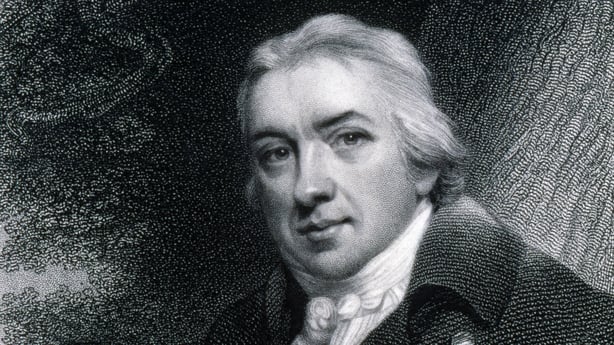The history of smallpox holds a unique place in medicine. It was one of the deadliest diseases known to humans, and to date is the only human disease to have been eradicated by vaccination.
Dr Edward Jenner was an English the physician who would go down in history as the person who invented the world's first vaccine.
He was born in Berkeley, Gloucestershire on 17 May 1749, the son of the local vicar. At the age of 14, he was apprenticed to a local surgeon and then trained in London.
Jenner introduced the smallpox vaccine in 1796. He observed that milkmaids who previously had caught cowpox did not catch smallpox and showed that inoculated vaccinia protected against inoculated variola virus.

The disease itself has been around for thousands of years. There were traces of smallpox pustules found on the head of the 3000 year-old mummy of Pharaoh Ramses V. It had a devastating impact with a 30% mortality rate. In the 20th century alone 300 million people would die from it.
In 1959, the World Health Organization (WHO) initiated a plan to rid the world of smallpox. Unfortunately, this global eradication campaign suffered from lack of funds, personnel, and commitment from countries, as well as a shortage of vaccine donations. Despite their best efforts, smallpox was still widespread in 1966, causing regular outbreaks in multiple countries across South America, Africa, and Asia.
The Intensified Eradication Program began in 1967 with a promise of renewed efforts. This time, laboratories in many countries where smallpox occurred regularly (endemic countries) were able to produce more, higher quality freeze-dried vaccine. A number of other factors also played an important role in the success of the intensified efforts, including the development of the bifurcated needle, establishment of a surveillance system to detect and investigate cases, and mass vaccination campaigns, to name a few.

By the time the Intensified Eradication Program began in 1967, smallpox had already been eliminated in North America (1952) and Europe (1953), leaving South America, Asia, and Africa (smallpox was never widespread in Australia). The Program made steady progress toward ridding the world of this disease, and by 1971 smallpox was eradicated from South America, followed by Asia (1975), and finally Africa (1977).
On 8 May 1980, representatives of all World Health Organization member states gathered in Geneva and officially declared that the smallpox-causing variola virus had been relegated to the history books, two centuries after the discovery of a vaccine.
